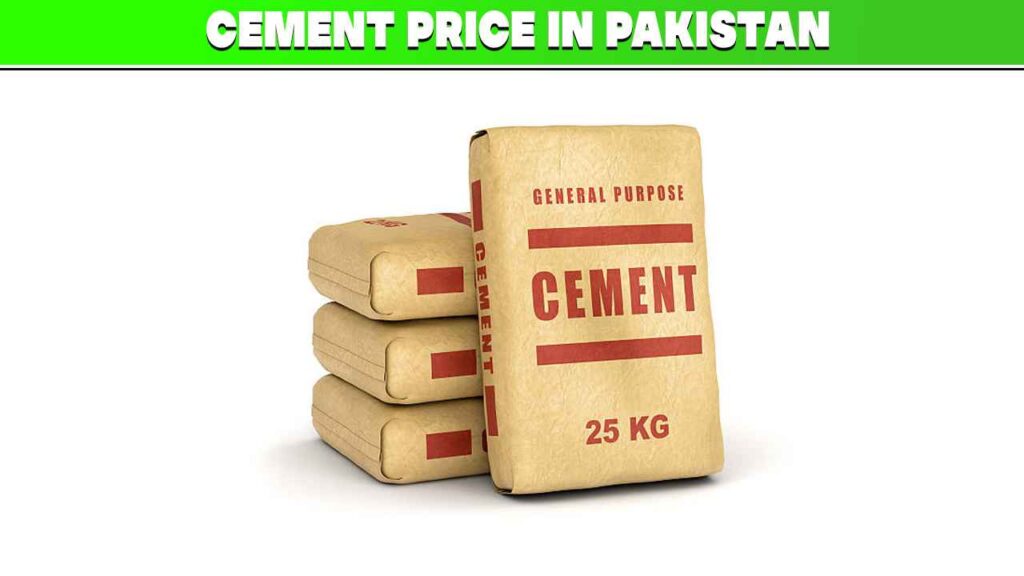Cement Price in Pakistan Today Updated Rates
Cement prices in Pakistan have been fluctuating over time, with popular options like 53 Grade Cement priced between RS. 1,375 to 1,420 per 50kg bag. These price changes are influenced by a variety of factors, including raw material costs and shifts in supply and demand.
Cement is a cornerstone of the construction industry, used in everything from small homes to large-scale infrastructure projects. Choosing the right cement ensures long-lasting quality, making it important for both builders and consumers to stay informed about current prices and the best options available.

Cement Price in Pakistan
| Companies | Price |
|---|---|
| BestWay Cement | RS. 1,405-1,415 |
| Power Cement | RS. 1,390-1,400 |
| Paidar Cement | RS. 1,390-1,400 |
| DG Khan Cement | RS. 1,405-1,415 |
| Kohat White Cement | RS. 2,050-2,100 |
| Maple Leaf White Cement Price in Pakistan | RS. 2,150-2,250 |
| Lucky Cement | RS. 1,400-1,410 |
| Cherat Cement | RS. 1,385-1,400 |
| Flaying Pakistan Cement | RS. 1,375-1,385 |
| Pakcem Cement | RS. 1,410-1,420 |
| Pioneer Cement | RS. 1,400-1,410 |
| Askari Cement | RS. 1,400-1,410 |
| Falcon Cement | RS. 1,395-1,405 |
| Maple Leaf Cement | RS. 1,400-1,410 |
| Kohat Cement | RS. 1,390-1,400 |
Related Article: Paint Price in Pakistan
White Cement Prices in Pakistan
White cement is priced higher than regular cement due to its specialized uses in decorative and aesthetic projects. Popular brands like Maple Leaf and Kohat offer white cement at RS. 2,050 to 2,250 per 40kg bag.
This type of cement is commonly used for finishes, tiling, and plastering where appearance is important. Although it comes at a higher cost, its smooth and clean finish makes it ideal for high-end construction and decorative applications.
Factors Affecting Cement Prices
Cement prices in Pakistan are influenced by various factors. Understanding these can help explain price fluctuations.
- Raw Material Costs: Changes in the prices of limestone, clay, and gypsum affect cement prices.
- Transportation Costs: Higher fuel prices increase the cost of transporting cement.
- Supply and Demand: If demand is high or supply is low, prices tend to rise.
- Production Costs: Rising energy and labor costs can push prices up.
- Global Market Trends: Cement prices are also influenced by global supply chains and material costs.
Tips to Choose the Right Cement for Your Project
Choosing the right cement for your project is essential to ensure the durability and quality of your construction. Start by considering the type of project you’re working on residential, commercial, or decorative. Each type of construction may require different cement specifications.
Next, look at the strength and grade of the cement. For heavy-duty or industrial structures, 53 Grade Cement is ideal due to its high strength. For regular residential construction, Ordinary Portland Cement (OPC) may be sufficient and more cost-effective.
Finally, consider the brand and price. Well-known brands like DG Khan and Lucky Cement offer reliable options, but if you’re on a budget, Flaying Cement might be a more affordable choice. Make sure to compare prices from different suppliers before making a final decision.
Conclusion
Cement prices in Pakistan vary based on the brand and type. Brands like BestWay, DG Khan, and Fauji Cement offer great quality, while Flaying Cement is a more affordable option. White cement, used for decorative work, costs more but is perfect for special finishes. Ultimately, the choice of cement depends on your project needs and budget.
Frequently Asked Questions (FAQs)
The price of cement in Pakistan generally ranges from RS. 1,375 to 1,420 per 50kg bag, depending on the brand and type.
Top brands like BestWay, DG Khan, and Lucky Cement are known for their reliability and high-quality products.
White cement, typically used for decorative purposes, costs around RS. 2,050 to 2,250 per 40kg bag, depending on the brand.
Yes, Flaying Cement is a good option for cost-effective construction projects, offering quality at a lower price.
Cement prices in Pakistan may increase due to factors like rising raw material costs, supply-demand imbalances, and changes in the global market.



